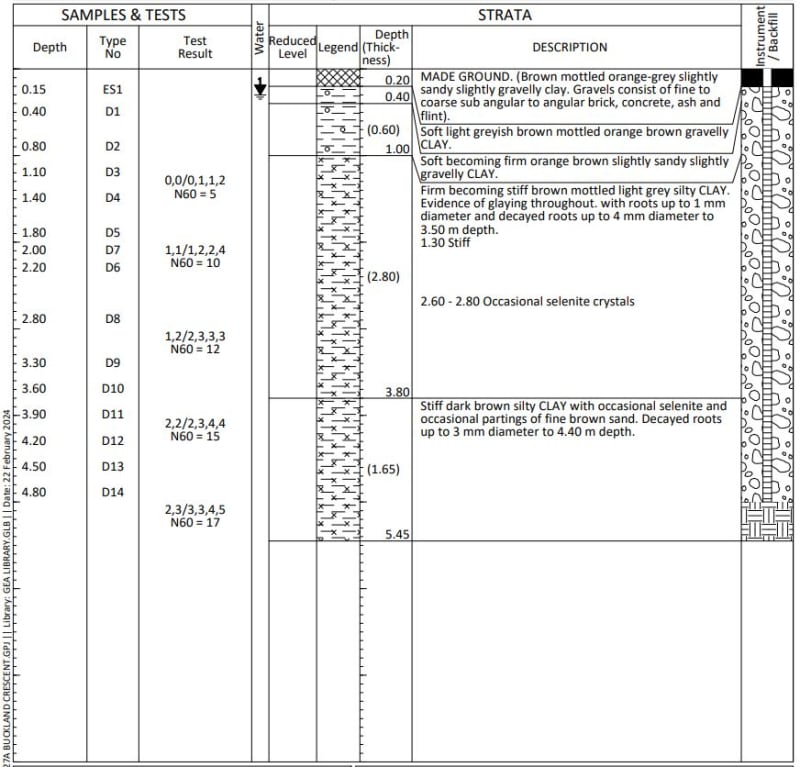Abuh001
Civil/Environmental
- Jan 24, 2018
- 28
Hi All,
I hope you are doing well.
I have been instructed to design a new concrete ground floor for a renovation project. The ground conditions are London clay with a high volume change potential, please refer to image 1 for the borehole log. There is a 15m tall ash tree roughly 12m away from the edge of the concrete slab.

Due to the presence of very shallow existing footings amongst other constraints, the slab is to be cast directly on the clay. I have decided to support the slab with screws piles at regular intervals, should the soil shrink away, the slab would still be supported. However, should the clay swell it would apply pressure directly to the underside of the slab. How can I calculate this swell pressure? Any help would be greatly appreciated.
I hope you are doing well.
I have been instructed to design a new concrete ground floor for a renovation project. The ground conditions are London clay with a high volume change potential, please refer to image 1 for the borehole log. There is a 15m tall ash tree roughly 12m away from the edge of the concrete slab.

Due to the presence of very shallow existing footings amongst other constraints, the slab is to be cast directly on the clay. I have decided to support the slab with screws piles at regular intervals, should the soil shrink away, the slab would still be supported. However, should the clay swell it would apply pressure directly to the underside of the slab. How can I calculate this swell pressure? Any help would be greatly appreciated.
